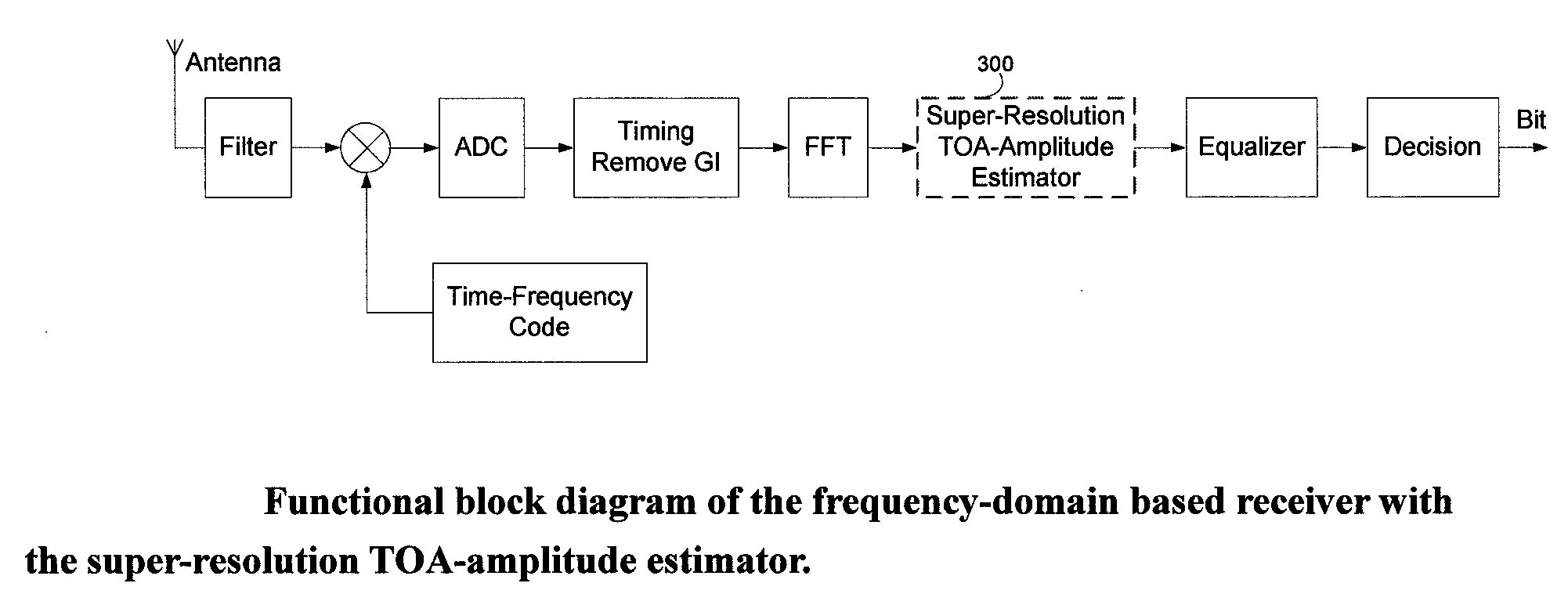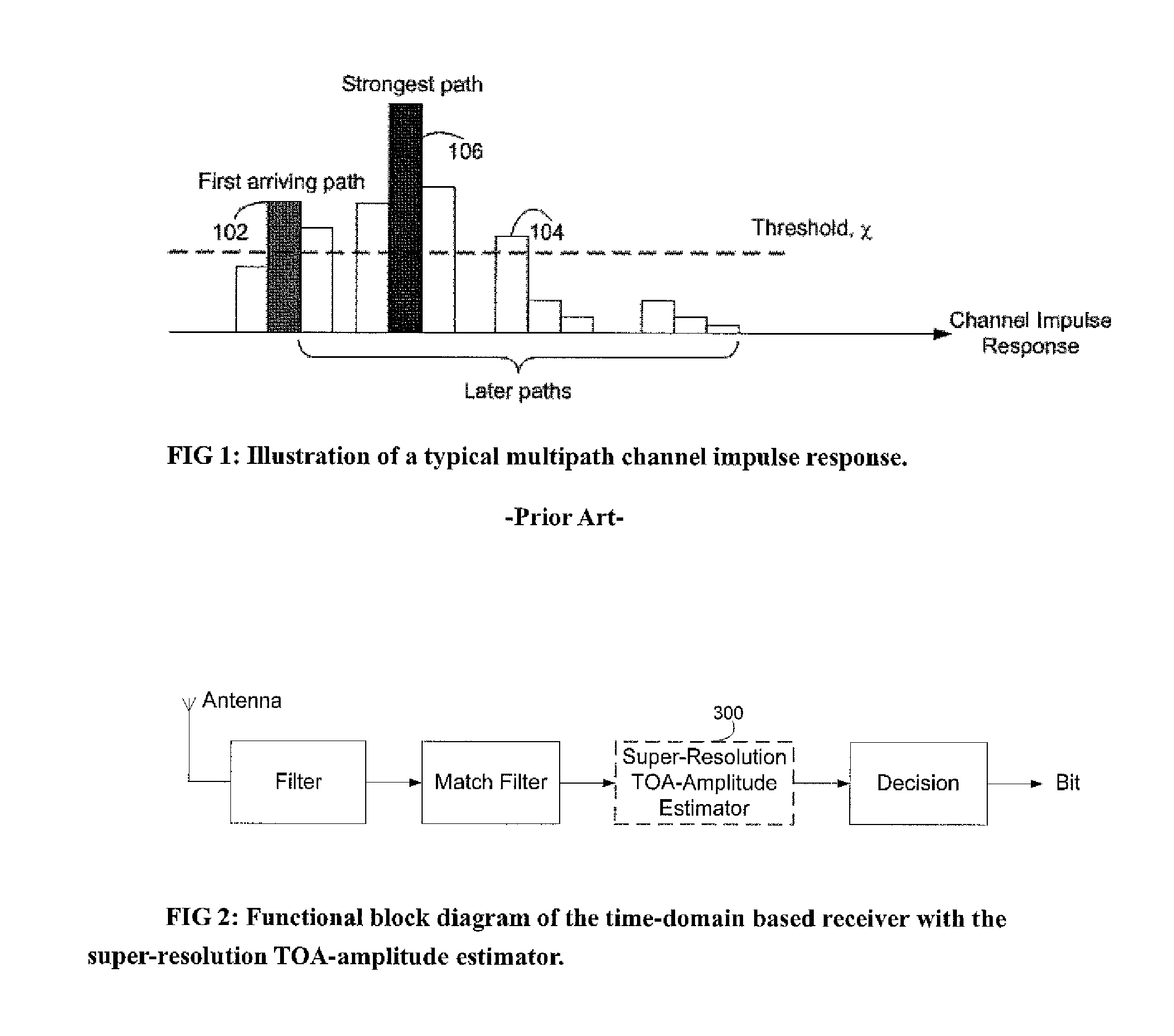Method and system for joint time-of-arrival and amplitude estimation based on a super-resolution technique
a super-resolution technique and joint time-of-arrival technology, applied in the field of geolocation techniques, can solve the problems of increasing implementation costs and the overall complexity of the sic-sage estimator still lower than the conventional ml based estimator, and achieves the effects of increasing complexity, high accuracy, and increasing range accuracy
- Summary
- Abstract
- Description
- Claims
- Application Information
AI Technical Summary
Benefits of technology
Problems solved by technology
Method used
Image
Examples
Embodiment Construction
[0031]FIG. 1 illustrates a typical multipath channel impulse response, which includes first arriving path 102 and strongest path 106 having signal amplitudes exceeding threshold value χ. Copending Application I, which is hereby incorporated by reference in its entirety, shows that the first arriving path 102, and not the later arrivals 104 (including the strongest path 106) is significant to achieving ranging accuracy. Therefore, a multipath channel is given by
[0032]h(t)=∑l=1Lαlδ(t-τl),(1)
[0033]where L is the total number of paths, while αl and τl are multipath amplitudes and the TOA for the l-th path, respectively. Based on equation (1), the time-domain received signal, r(t) after the multipath channel is given by
[0034]r(t)=∑l=1Ls(t;θl)+n(t),(2)
[0035]where
s(t;θl)=αlexp{−j2πφlt}p(t−τl), (3)
[0036]in which p(t) is the transmit signal pulse with duration Tp, θl=[τl, αl, φl] is the parameter vector containing parameters, i.e., TOA, amplitude and phase, for the l-th path, respec...
PUM
 Login to View More
Login to View More Abstract
Description
Claims
Application Information
 Login to View More
Login to View More - R&D
- Intellectual Property
- Life Sciences
- Materials
- Tech Scout
- Unparalleled Data Quality
- Higher Quality Content
- 60% Fewer Hallucinations
Browse by: Latest US Patents, China's latest patents, Technical Efficacy Thesaurus, Application Domain, Technology Topic, Popular Technical Reports.
© 2025 PatSnap. All rights reserved.Legal|Privacy policy|Modern Slavery Act Transparency Statement|Sitemap|About US| Contact US: help@patsnap.com



